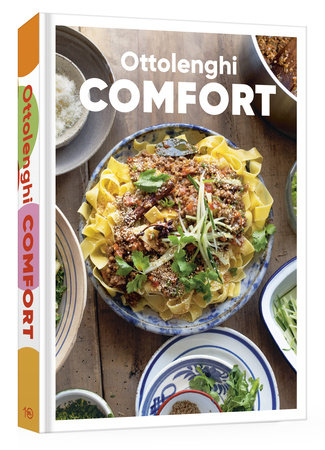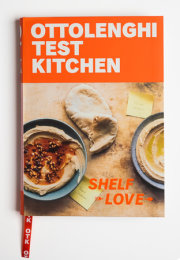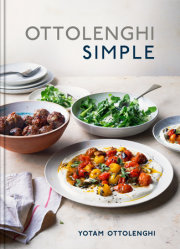IntroductionWhen it comes to cooking and eating, what does “comfort” mean? At first glance, we might think of it as the food we make and eat at home, after a tough day. It’s the food we make without thinking too much. It might also be the recipes we grew up on, which remind us of being a kid and being cared for. Or the food we eat too much of, unable to resist its ability to hit the spot.
Nurture, convenience, nostalgia, indulgence: agreeing on the notion of comfort food is fairly straightforward. What’s harder to pin down, though, are the actual dishes that hit these proverbial spots. One person’s idea of comfort food might be the next person’s idea of challenging. It’s so personal, so tied up with home, with family, with memory, even with the random idiosyncrasies of human taste.
It’s culturally specific, as well. One kid’s grilled cheese sandwich dream is the next kid’s nightmare. Ditto the adult who then makes that same sandwich, years down the line, to remind them of the kid they once were. Mac ’n’ cheese, chicken ramen, schnitzel, sausages and mash, pizza, chicken noodle soup, lentils and rice, dal, dumplings—the definitive comfort food for many, certainly, but there is no one-comfort-food-fits-all. Trying to pin down a specific set of comfort food recipes is as slippery as a bowl of noodles.
And yet those noodles, however novel they might be, will always feel somehow nostalgic. It’s this—the ability of a dish to be nostalgic and novel at once—that’s at the heart of our interpretation of comfort. In this book we offer dishes that are both comfortable and creative, familiar and fresh, reassuring and revelatory.
It is also very much about the personal journeys we’ve been on, and all the stories these journeys contain. In Comfort, rather than trying to take in a whole sweep of comfort food, we’re staying on firmer ground, that which we’ve trodden ourselves. Among the four of us—Yotam, Helen, Verena, and Tara—it’s a fair bit of global ground. Yotam’s takes in Italy and Germany (from his parents), Jerusalem to Amsterdam (where he lived and ate his body weight in croquettes), to London. Helen’s stretches from China (from her grandparents) to Malaysia to Melbourne (where she was raised) to west London. Verena’s trodden ground takes in Germany and Scotland, to New York (where she trained), to now London. Tara’s more London through and through, but the amount of tahini, eggplants, lemons, feta, and olive oil she’s cooked with over the past twenty years means she’s pretty good on the subject of Levantine food.
Looking at the ground the four of us had trodden showed us the link between comfort food and movement, between comfort food and immigration. When we move somewhere new, we do two things. We take on (and take in) the culture and cuisine of the place we have moved to and we keep hold of and preserve the culture and cuisine of the place we have left.
Practicalities also play a part. We can’t lug around our childhood bedroom, or sofa, or favorite spot we used to go to for a family picnic. If we are missing the chicken soup, the lentils and rice, or the pasta bake our mother or father used to make for us when we needed a hug as a kid, though, we can try to re-create these dishes. They’re edible transitional objects, and nothing will fast-track us back to that hug years down the line more than making that soup, or those lentils, or that pasta bake.
We don’t cook or eat in a vacuum, so once this dish is made, it’s usually shared with someone else: with our new family or friend or neighbor. That’s when the ripple effects are felt. What started off as a metaphorical hug becomes a recipe that someone then asks for, makes for themselves, and goes on to share with a whole new group.
This process is happening the world over. It’s why a single curious cook can eat their way around the world from their own kitchen table. It’s why Italian food is so tied up with American food. It’s why we can all buy sushi and seaweed, pizza and pasta, chana dal and curry leaves from the same supermarket.
When done with awareness, acknowledgment, relish, and respect, this is, for us, cultural appreciation, not appropriation. That’s what comfort food means to us. It’s about our journeys and all the stories contained in them. This book is a celebration of that: of movement, of immigration, of family, of home—of people.
Other ways to define comfort, none mutually exclusive, can also be about a certain type of food, for example: the face-planting comfort of carbs, maybe, or the inherently soothing nature of soup. It might also be about the situation in which food is eaten: the comfort of sitting around with friends, perhaps, or the very opposite—the comfort of quietly eating alone, with the world shut out. Very often, it’s about the combination of right food and right time and right place. That explains why an ice cream eaten on a hot day on a park bench can be as comforting as a glass of red wine and a plate of roasted chicken inside on a cold day, when the kitchen windows are blocked out with steam.
What makes food comforting can be about where and how we eat, why we eat, and who we eat with as much as what we’re eating in the first place. Something to think about, if you like, as you choose the recipes to try out and make your own. We hope they bring you comfort, in whatever form that comfort may come.
Copyright © 2024 by Yotam Ottolenghi with Helen Goh. All rights reserved. No part of this excerpt may be reproduced or reprinted without permission in writing from the publisher.

















![Ottolenghi Comfort [Alternate Cover Edition]](https://images.penguinrandomhouse.com/cover/9780593836941?width=180)



![Essential Ottolenghi [Two-Book Bundle]](https://images.penguinrandomhouse.com/cover/9781984859020?width=180)







